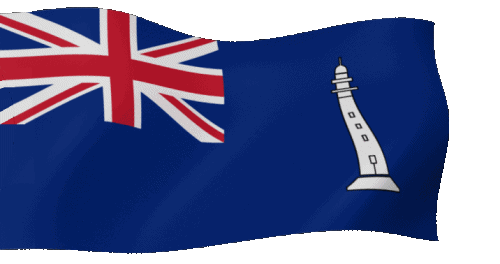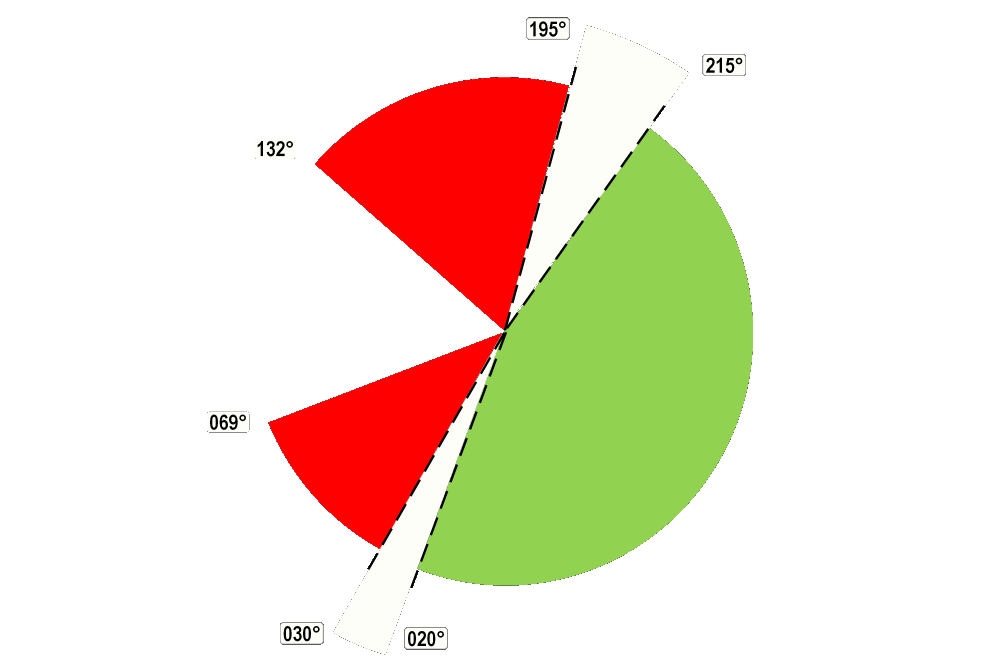There is a technical definition for a lighthouse. Maritime signaling equipment consisting of 4 main elements:
This building is very often a tower on a promontory (cliff). The range at which a lighthouse light can be seen depends on the height of the light (tower height) and atmospheric conditions. Since the geographic horizon is limited by the curvature of the earth, the range of a lighthouse can be easily determined.

Assuming a lighthouse is burning at a height of 30 meters above sea level, an observer at 4.5 meters above sea level can see the lighthouse up to 16 NM (~29.6 km) away. This is known as the geographic range of light. (One nautical mile is equivalent to 1.15 land miles and equals 1.852 kilometers). Powerful lights can also often be seen above the horizon because the light is scattered upwards by the surface of the water and reflected by the vapor particles in the atmosphere. This phenomenon is known as the loom of light.
Lighthouse lighting began with simple wood fires and continued for generations using other methods, such as candles. The oil lamp started as a simple instrument but evolved into a machine with multiple fuses, clockwork oil pumps, specialized chimneys, hydraulic, pneumatic and other variants.
The lighting and control also changed completely with the introduction of electricity and later again with LED lighting and solar panels. The first warning lights for sailors were built long before the Christian era. The earliest known reference to a lighthouse dates back to 1200 BC. This reference appeared in the Iliad, Homer's Greek epic poem.
The luminous intensity of a light, or its candlepower (old definition), is now expressed in international units called Candela (cd). Intensities of lighthouse beams can vary from thousands to millions of candelas.Many inventors have been concerned with improving the lighting in lighthouses. Augustin Jean Fresnel was an important person in the development of lenses for lighthouses. Fresnel invented a lens in 1819 that would revolutionize lighthouse illumination worldwide. The first lens installed at the Cordouan lighthouse (Gironde - France) in 1823 consisted of eight panels of annular lenses placed around the lamp with a focal length of 920 mm. The table in the right column shows that this was a 1st order lens.
In this part of the website you will find more information about the life of Augustin Fresnel himself and an explanation about his most important inventions. The Fresnel lenses is the 1822 important invention of Augustine Fresnel who invented a lens that would make his name commonplace along all seacoasts of the world.
The first lighthouses were open wooden fires that are strongly influenced by weather conditions. Especially in the early 19th century, there were many developments that made the lighthouses what they are today. Building constructions in hard-to-reach places, developments in technology to obtain the best possible light output and developments in the field of communication have led to many new developments.
In the entire development to date, in addition to the four basic elements above, many new possibilities have arisen to improve the support/security of the marinars.
>>> AIS - Automatic Indentification System
Main function is navigation and collision avoidance for IMO SOLAS vessels using short messages in the Maritime Mobile VHF band to exchange relevant information.
>>> DGPS - Differential Global Positioning System
Is a Radar-based navigation system that eliminates errors in a GPS receiver that will allow the accuracy level to be significantly enhancedcan assist
>>> Fog signals
Are devices that uses sound to warn vessels of navigational hazards such as rocky coastlines in foggy conditions. The term is most often used in relation to marine transportare used to give an acoustic signal in poor visibility as an aid to the navigator.
>>> Light Characters
A graphic and/or text description of a navigational light sequence or colour displayed on nautical charts or in a Light List with the chart symbol for a lighthouse, lightvessel or buoy.
>>> Radar Beacons
Also called RACON (RAdar and beaCON) is a radar transponder commonly used to mark maritime navigational hazards.
>>> Reflectors
Part of a the early lighthouse lights to improve visibility
>>> Glossery of Terms
Is a list of common lighthouse terms.
Main function is navigation and collision avoidance for IMO SOLAS vessels using short messages in the Maritime Mobile VHF band to exchange relevant information.
>>> DGPS - Differential Global Positioning System
Is a Radar-based navigation system that eliminates errors in a GPS receiver that will allow the accuracy level to be significantly enhancedcan assist
>>> Fog signals
Are devices that uses sound to warn vessels of navigational hazards such as rocky coastlines in foggy conditions. The term is most often used in relation to marine transportare used to give an acoustic signal in poor visibility as an aid to the navigator.
>>> Light Characters
A graphic and/or text description of a navigational light sequence or colour displayed on nautical charts or in a Light List with the chart symbol for a lighthouse, lightvessel or buoy.
>>> Radar Beacons
Also called RACON (RAdar and beaCON) is a radar transponder commonly used to mark maritime navigational hazards.
>>> Reflectors
Part of a the early lighthouse lights to improve visibility
>>> Glossery of Terms
Is a list of common lighthouse terms.



 Update: 01-03-2025
Update: 01-03-2025




